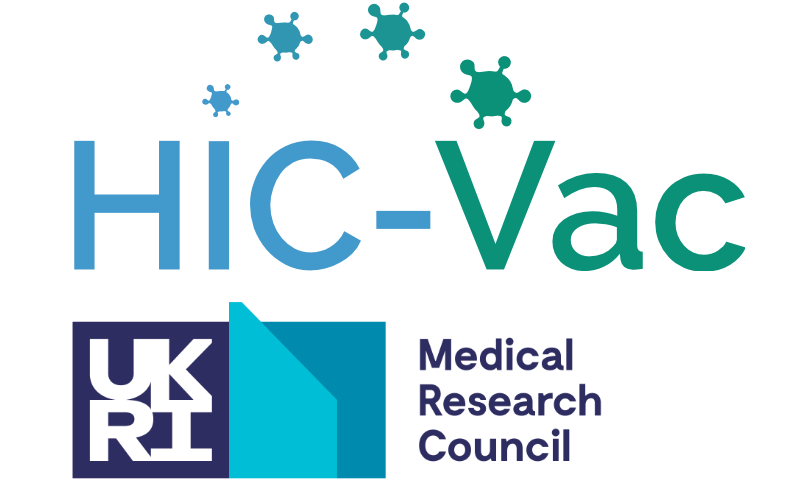February 2022: the first published data
Published in Nature Medicine: https://www.nature.com/articles/s41591-022-01780-9
During the SARS-CoV-2 Human Challenge Characterisation Study, 36 volunteers were given a small dose of coronavirus (SARS-CoV-2)* via drops in their nose (inoculation) in a specialist unit at the Royal Free Hospital in London. The volunteers were all young adults - between 18-30 years old - with no underlying health conditions and were at low risk of becoming seriously ill. The volunteers all stayed in the Royal Free Hospital unit under close medical supervision until they were virus-free.
The first results from this landmark study have been published on a pre-print server (they have not yet been reviewed by other experts but will be accessible to view, to allow other scientists early access to the results) and detail the outcomes for the 36 volunteers and important new insights about SARS-CoV-2 infection.
Safety
Firstly, the human infection challenge study was shown to be safe. Nineteen of the 36 (53%) volunteers became infected, 16 of whom experienced mild-to-moderate cold-like symptoms, including a stuffy or runny nose, sneezing, and a sore throat. Some volunteers also had headaches, muscle/joint aches, tiredness and fever. One common symptom was loss of smell (anosmia), but this returned to normal in most (10/13) of the volunteers who experienced this. The 3 volunteers with longer lasting loss of smell are showing improvement during post-study follow-up. No changes were seen in the volunteers’ lungs and there were no serious nor longer-lasting effects (aside from change in smell) – all volunteers recovered well and none needed hospital care for COVID-19.
Following the course of infection
As researchers knew the exact time of the volunteers’ exposure to the virus (i.e. when coronavirus was given to volunteers via drops in their nose and also called inoculation), they were able to work out the ‘incubation time’ of the infection (the amount of time until their throat or nose swabs tested positive). The average time between inoculation with the virus and volunteers’ first testing positive in throat swabs was 40 hours (just shy of 2 days). The swabs taken from volunteers’ noses tested positive for virus around 18 hours after the throat swabs.
Following the first positive test, there was a rapid rise in the amount of virus found in swabs taken from volunteers’ noses and throats, with levels peaking at around 5-6 days after inoculation. The levels of virus were similar whether the volunteer experienced symptoms or not. Although virus was detectable in the throat before the nose, levels in the throat were lower overall.
The higher virus levels detected in the nose means there is a greater chance that people will shed more virus from the nose than mouth, which could be an important consideration regarding face coverings and hygiene when blowing your nose or sneezing. Further research is being carried out to find out more about how the virus is being transmitted.
Live virus (that could go on to infect others) was picked up in lab tests for about 9 or 10 days after the infected volunteers had been inoculated (about a week after testing positive), supporting the isolation period and testing advocated in most guidelines. Low levels of viral genetic material, detected by PCR tests, were still present in swabs from all infected participants at 14 days after inoculation, although no live virus was found at this point.
PCR versus lateral flow tests
Lateral flow tests are commonly used to test for COVID-19 in asymptomatic people or those with mild cold-like symptoms in the community. This human infection challenge study offered a valuable opportunity to compare lateral flow tests to other types of tests, including PCR testing, to see how accurate they are, helping to shape policy on testing for COVID-19.
All the volunteers who became infected (as confirmed by PCR) had a positive lateral flow test result too, whilst the volunteers who didn’t become infected all tested negative by lateral flow test. On average, the lateral flow tests detected virus around 24-48 hours after the PCR test did, so they are a little less sensitive at the beginning of infection. The lateral flow tests all turned negative 24-72 hours after the last swab containing live virus was picked up in lab tests. These results are reassuring, showing that lateral flow tests are reliable at identifying most infectious people, and can be trusted as a “test- to-release” tool at the end of self-isolation.
Next steps
Future work will see the team investigate why some people became infected and others did not. Understanding natural protection against COVID-19 could generate ideas for better vaccines and treatments. In partnership with hVIVO and funded by the Wellcome Trust, the Imperial team are also developing a human challenge virus from the more recent Delta variant which could be used in follow-on studies.
*The volunteers were inoculated with the original variant (Wuhan, 2019) of the SARS-CoV-2 virus.
March 2021: the first safety insights
The first three volunteers who participated in the first phase of the human infection study with coronavirus left the controlled facility at the Royal Free Hospital after their two week period of isolation. All three volunteers had been exposed to a low dose of coronavirus via droplets in their nose. There were no complications and all three were discharged in good health after tests showed they were no longer infectious. You can read more here.

